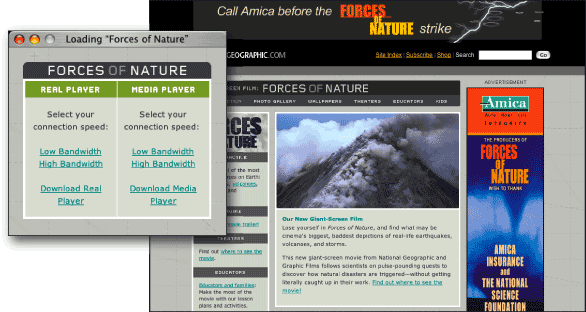Audio and Video
Provide alternate formats for media-based content
Access to audio and video content places significant demands on the user. First, users must be able to see and hear. From a technology standpoint, digital media require much more data than text or images. Users with slow Internet access will have difficultly downloading all the bits associated with media files. Additionally, digital media must be greatly compressed to make files small enough for network delivery. Users with older computers may not have the processor power needed for decompression and playback. Moreover, audio and video come in different formats, all of which require a plugin for access. Whenever access to content requires a special software installation, universal usability is compromised, because many factors can interfere with a successful installation.
As discussed throughout this book, the best format for providing universal access to content is text. For nontext formats—such as images, audio, and video—alternate access can be provided using text. A transcript and captions can provide access for users who cannot hear the audio. A description of the video content can provide access to users who cannot see the video. In addition, text can provide access to users stymied by technical limitations. A page containing the text transcript and relevant still frames is a useful and reliable alternative to a video presentation since access does not require special software or a high-speed network connection.
When providing video and audio, allow users to choose from low, medium, and high bandwidth versions of the media file—particularly when offering video, which is far more bandwidth-intensive than audio. Also consider providing the content in different formats, such as QuickTime, Real, or MPEG-4, and allow users to choose their preferred format (Figure 12.4).

Figure 12.4: National Geographic allows users to choose between media formats—Real Player and Media Player—and also between low- and high-bandwidth versions. www.nationalgeographic.com

